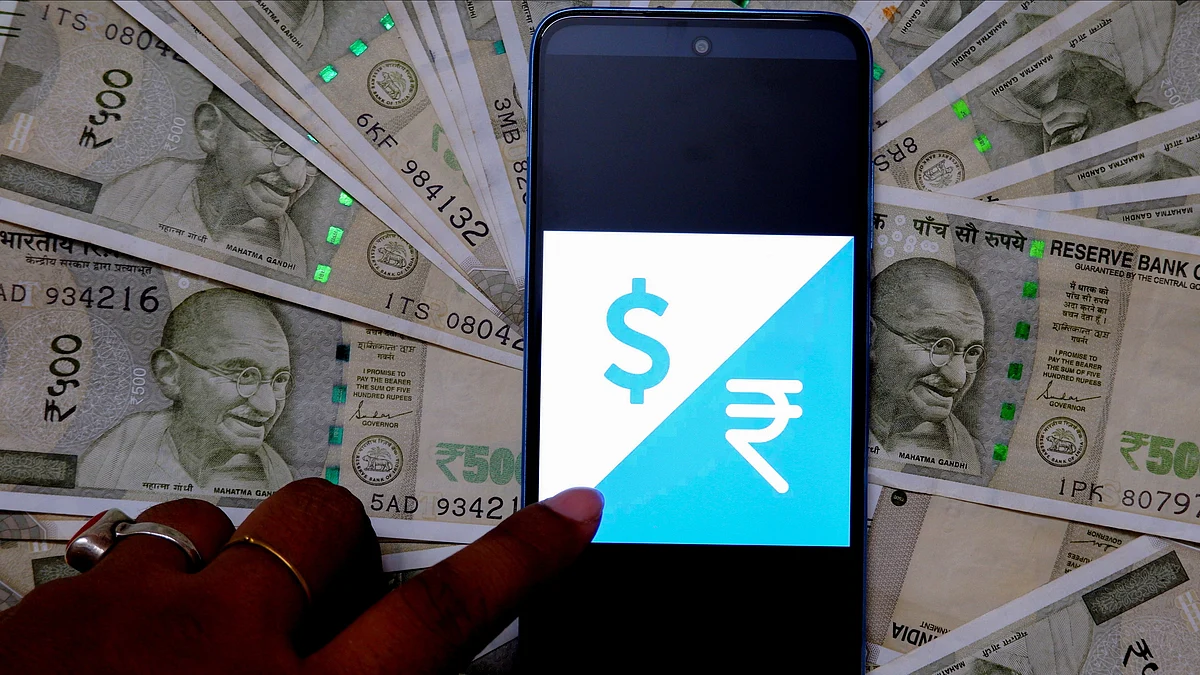Economy
RBI’s $44.5 bn tactic to stem rupee’s fall amid geopolitical, economic challenges
FIIs pulled out Rs 1.14 lakh crore and Rs 45,974 crore in October and November

The RBI deployed a significant $44.5 billion in forward and spot currency markets in October, as revealed in its latest monthly bulletin. This strategic intervention aimed to strengthen the Indian rupee amidst heavy foreign portfolio outflows and a rising US dollar value.
The RBI's aggressive intervention strategy helped limit the rupee's depreciation, keeping it relatively stable despite dollar outflows. In October, foreign portfolio investors withdrew $10.9 billion, yet the rupee only depreciated by 30 paise to close at Rs 84.06 against the US dollar for the month.
Breaking down the intervention, the central bank sold $9.3 billion in the spot market and $35.2 billion through forward sales—one of the highest figures recorded. However, the rupee breached the Rs 85/$ mark in December, hitting a record low of Rs 85.20/$. Analysts attribute this to a surge in US bond yields, strengthening the dollar, and strong importer demand.
Mitali Mukherjee, Director of Journalist Programmes at the Reuters Institute for the Study of Journalism, University of Oxford, analysed the RBI's strategy in her column for the Frontline.
She noted that the central bank's short positions in the non-deliverable forwards (NDF) market jumped threefold between September and October, reaching over $49 billion. Estimates suggest this figure could climb to between $90 and $100 billion.
Mukherjee highlighted that the NDF market often serves as the first line of defence during currency volatility. However, she cautioned that while the RBI can theoretically build an unlimited position, practical market constraints pose challenges.
Published: undefined
Why Is the Indian Rupee Falling?
Three key factors contribute to the rupee's decline:
Foreign Fund Outflows: In October and November, foreign institutional investors (FIIs) pulled out Rs 1.14 lakh crore and Rs 45,974 crore, respectively. These outflows increased dollar demand and weakened the rupee.
US Election Results: The re-election of Donald Trump as US President has spurred expectations of higher Treasury yields, fiscal expansion, and rising interest rates, strengthening the dollar while exerting pressure on emerging market currencies, including the rupee.
Geopolitical Tensions: Global economic uncertainty from the Russia-Ukraine conflict and US-China rivalry has driven investors toward safer US dollar assets, further pressuring the rupee.
A depreciating rupee has a mix of positive and negative impacts on the Indian economy. On the positive side, it boosts exports by making Indian goods and services more competitive in global markets, providing a significant advantage to industries like IT. Additionally, non-resident Indians (NRIs) benefit from favourable exchange rates when sending money home, increasing the value of their remittances.
However, the negative consequences often outweigh the benefits. A weaker rupee leads to higher import costs, particularly for essential commodities like crude oil, which in turn fuels inflation and erodes consumer purchasing power. Companies with foreign-denominated debt also face increased repayment costs, straining corporate finances.
A depreciating rupee can further dampen investor sentiment, potentially deterring foreign investment and slowing economic growth. This combination of factors makes managing the rupee's value critical for maintaining economic stability.
Published: undefined
What is the RBI doing?
The RBI employs a range of measures to stabilise the rupee and counter its depreciation. One key strategy is selling dollars in the foreign exchange market, which increases the supply of dollars, reduces their demand, and helps strengthen the rupee. Additionally, the RBI buys rupees directly in the forex market, boosting demand for the currency and supporting its value.
Adjusting interest rates is another tool used, as higher rates attract foreign investors seeking better returns, thereby increasing demand for the rupee. Liquidity management also plays a crucial role, as the RBI controls market liquidity to reduce inflationary pressures, which can indirectly help stabilise the currency. Together, these strategies aim to maintain the rupee's stability amid global and domestic economic challenges.
Outlook for the rupee
Historically, the rupee has depreciated against the dollar at an average annual rate of 3.2 per cent. However, the past year saw a relatively modest 1.7 per cent depreciation. A report by SBI predicts an 8-10 per cent depreciation during the Trump administration’s second term, driven by global factors.
Mukherjee further pointed to the symbolism of the rupee's performance, noting its connection to national sentiment. As the currency faces headwinds from a robust US dollar, geopolitical uncertainties, and volatile crude prices, experts argue that the RBI’s substantial foreign exchange reserves of $658 billion may provide a safety net.
While food inflation shows signs of cooling and a potential rate cut looms, the rupee’s trajectory will remain a key indicator of economic resilience in the face of global challenges.
Published: undefined
Follow us on: Facebook, Twitter, Google News, Instagram
Join our official telegram channel (@nationalherald) and stay updated with the latest headlines
Published: undefined